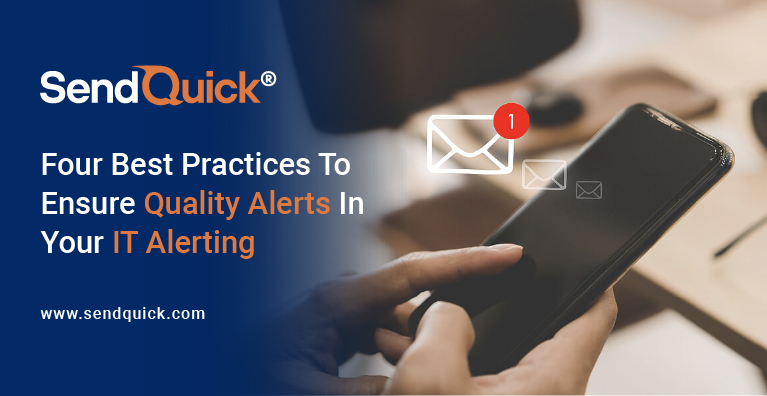Alerts generated by an organisation’s IT alerting system are crucial to identifying and resolving issues before they affect regular operations and, ultimately, the customers they serve. However, too many alerts can overwhelm support teams and desensitise them over time, potentially slowing down their incident response.
An optimised alert strategy avoids this and allows teams to tackle the right issues at the right time, ensuring optimal system availability, uptime, and performance. Moreover, it is the cornerstone of observability or the proactive collection, visualisation, and application of intelligence to an organisation’s metrics, events, logs, and more to better grasp the complexities of its digital infrastructure. One of the keys that make up this strategy is alert quality management (AQM), which helps to optimise it to generate fewer but more meaningful alerts that outline the core issues and mitigate alert fatigue. Below are a few tips to consider when developing these valuable alerts for your alert management platform.
1. Only create alerts that matter to the business
A robust and comprehensive IT alerting system can set up custom alert policies for a wide range of instruments, but that does not necessarily mean you should create alerts for anything and everything. Simply put, consider quality over quantity and be careful in choosing alert conditions to avoid overloading teams with alert noise. Doing so results in more confident teams with sparser, more meaningful, and higher quality alert policies that inform them if something is affecting the organisation or its customers. In contrast, less confident teams may develop a hoarder mentality and keep low-quality policies that only add to the noise.
Moreover, actionable policies are what make alerts meaningful to support teams. They must present issues and incidents that warrant active response and engagement. Otherwise, they only create unnecessary noise and alert fatigue. Thus, if nothing is amiss, there should be no noise from alerts.
2. Leverage automated detection features
System anomalies are behavioural trends that deviate from or do not match a system’s historical data. These could range from simple and benign causes like unprecedented behaviours from known controlled processes such as pen tests or something more undesirable. Automated detection capabilities handle the brunt of monitoring system activity by spotting unusual changes across the organisation’s services, applications, log data, and more. These automated alerts are predominantly based on golden signals like latency, errors, and throughput.
3. Notify the right personnel at the right time by configuring notification workflows
Sending automatic alerts to collaboration platforms like slack or other third-party services when systems need attention helps streamline the support team’s workflow. Considering how and when these notifications will be sent is crucial to preventing alert fatigue. Do the support teams want to be notified whenever something goes wrong? Will every team member get a notification? Should similar or closely related notifications be grouped into one?
Answering these questions and more guides companies in how they can effectively notify their personnel at the right time. For instance, they could filter out the issues that will be sent to a destination by ensuring only a specific number of people and/or roles can receive them based on factors such as the nature of the issue, affected services, violation, and many others.
4. Establish and track the proper alert metrics
As mentioned, although alerts are indispensable to quickly identifying an issue, too much of a good thing leads to alert fatigue; alerts could trigger too often, configured thresholds may be highly sensitive, or some alerts generated are not all that useful or relevant. Hence, tracking metrics is the best way to ensure your alert quality remains high over time. Focus on metrics and key performance indicators (KPIs) that reveal the least valuable and noisiest alerts that need to be improved value-wise or outright eliminated. For instance, IT teams could use the gathered AQM data to evaluate current metrics and adjust the alert policies to lower alert volume to acceptable levels without affecting the company’s goals for stability and reliability.
Conclusion
To ensure meaningful and critical alerts are acted on quickly, it is vital to have a top-of-the-line and reliable IT alert solution that facilitates them to the right people at the right time.
SendQuick’s extensive line of IT alerting and notification products centralise your alerts and send them instantly through multiple compatible channels ranging from SMS, email, and major omnichannel messaging platforms to collaboration tools. As a trusted SMS gateway provider in Singapore, SendQuick also offers products focused on enterprise mobile messaging, including SMS broadcast messaging, messaging portals and APIs, omnichannel messaging platforms, and many more.
For more details, visit our solutions page or contact us to speak with a SendQuick expert.






